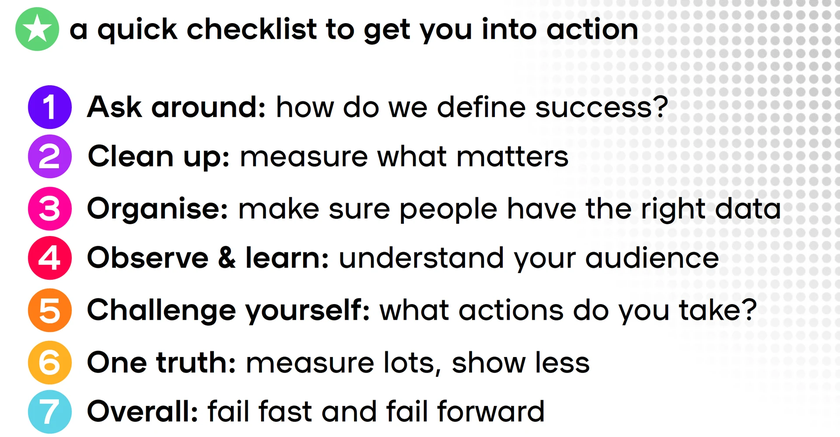From data to action
Data is great and we believe that no online publishing newsroom should be without it. But that doesn't mean that any data will do, or that simply having the data will make the job better. Letting the data inspire your actions is where the real challenge lies. In other words, how do you get from data to action?
Actionability is the keyword here. In this blog we will discuss the steps you need to take in order to collect the right data, present it in a way that's actually useful, get it to the right people and start taking the right actions. This will let you transform your data into actionable insights, that help you make the most of your content and support your business model in the best way possible.
We'll discuss how to:
- Focus on the statistics that really matter
- Become the master of your data, rather than the other way around
- Get the right data to the people that actually need it
- Find valuable insights to optimise your content strategy
- Plan your actions according to the data
- Determine if your actions are successful
What data do you actually need?
The accessibility of data has people drowning in it. More data isn't always better, because if it doesn't tell you the right things, it will only confuse you. And the people who could benefit the most from the insights often lack the skills to interpret it. When we asked Dmitry Shishkin, digital transformation and innovation specialist well-known for his 'user needs' work at BBC World Service, about data-related challenges for the journalism (and any other content-creating) industry, he said: "Actionability is one of the hardest things to do. The majority of people will know what to do, just not how to do it - let alone when. Especially when it comes to making plans and executing them. Simply because that is not their job, or they are not experienced in it.”
So how do you make your data work for you? Not every company can afford to hire specialists to help with this. Fortunately, there's a lot you can do yourself. Take a moment to pause and prepare for what's ahead, and make sure the available data shows you what you need to know.
Determine which metrics support your business model
When it comes to data, less is definitely more. The risk with large amounts of unstructured data, is that people will see what they want to see in it. If you don't direct the numbers in a certain direction, it will be difficult to draw unambiguous conclusions. So, first define what numbers are truly important. Whether they're pageviews, conversions or engagement and loyalty, you need to be able to track your progress.
Also take your business model into consideration. You can measure your success in 3 simple steps.



